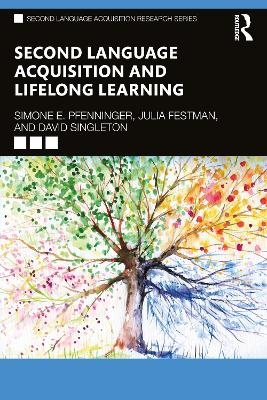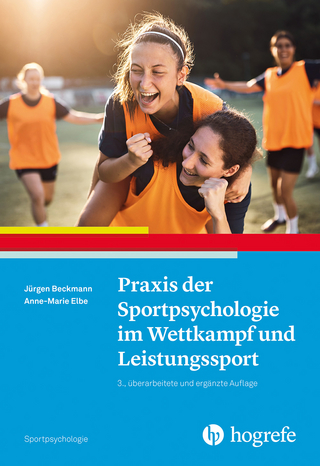
Second Language Acquisition and Lifelong Learning
Routledge (Verlag)
978-0-367-76913-0 (ISBN)
Language fundamentally defines and distinguishes us as humans, as members of society, and as individuals. As we go through life, our relationship with language and with learning shifts and changes, but it remains significant. This book is an up-to-date resource for graduate students and researchers in second language (L2) acquisition who are interested in language learning across the lifespan. The main goal is to survey and evaluate what is known about the linguistic-cognition-affect associations that occur in L2 learning from birth through senescence (passing through the stages of childhood, adolescence, adulthood, and third age), the extent to which L2 acquisition may be seen as contributing to healthy and active aging, the impact of the development of personalized, technology-enhanced communicative L2 environments, and how these phenomena are to be approached scientifically and methodologically. The effects of certain specific variables, such as gender, socio-economic background, and bilingualism are also analyzed, as we argue that chronological age does not determine the positioning of L2 learners across the lifespan: age is part of a complex web of social distinctions such as psychological and individual factors that intersect in the construction of a learner’s relative status and opportunities.
Simone E. Pfenninger is Professor of English Linguistics at the University of Zurich. Her principal research areas are variationist SLA, psycholinguistics, and multilingualism, especially in regard to quantitative approaches and statistical methods and techniques for language application in education. Julia Festman is Professor of Multilingualism at University College of Teacher Education Tyrol in Innsbruck. Her main research focus is on multilingualism on the individual, cognitive, and educational level. She combines psycholinguistic, neurolinguistic, and neuroscientific methods for investigating learning and processing of multiple languages. David Singleton is Emeritus Fellow at Trinity College Dublin. He served as Secretary General of AILA and as President of EUROSLA. He is a EUROSLA Distinguished Scholar and an Honorary Member of AILA.
Chapter 1 Introduction: Seasons of life in SLA
Chapter 2 Infant and childhood bilingualism
2.1 Impact of early exposure to two languages on brain development, functioning and structure
2.1.1 The many shades of child bilingualism: Early and late bilinguals and beyond
2.1.2 Age of onset of exposure to a second language linked to ultimate attainment only – but there is more
2.1.3 Age of onset of exposure to a second language linked to influences on the brain
2.2 Chronological age and maturation
2.2.1 Chronological age, maturation and the brain
2.2.2 Child language development and variability
2.3 Learning environment as a complex socio-cultural variable: Setting the stage for early L2 learning
2.4 From environment to input: Early experiences with language(s) and focus on input dependency (quantity and quality)
2.5 Child-internal factors
2.6 Idiosyncratic learner trajectories – from early on?
2.7 Methodological envoi
Chapter 3 Dual language development in school-age children and adolescents
3.1 Dual language development in schools
3.1.1 Brain development as a basic challenge in adolescence
3.1.2 Dual language learners (DLLs) in schools
3.1.3 Some notes on the bilingual advantage
3.2 The ‘earlier is better conundrum’ in school settings
3.2.2 Intensity trumps quantity in foreign language instruction
3.3 Methodological envoi
Chapter 4 Language learning in young adulthood and midlife
4.1 Young adults
4.1.1 Plurilingual couples
4.1.2 Opportunities for bi-/plurilingual love
4.1.3 Planning and policy
4.1.4 Love and language use: three cases
4.1.5 Methodological envoi
4.2 L2 acquisition in midlife
4.2.1 Heritage languages
4.2.2 Adult classroom learners in their home country or region
4.2.3 Adult migrant foreign language acquirers
4.2.4 Methodological envoi
Chapter 5 Complex and dynamic realities of second language (L2) learning later in life
5.1 Additional language learning in the third age
5.1.1 Inter-individual variation across the lifespan
5.1.2 Intra-individual variation across the lifespan
5.1.3 Intra-individual variation as a source of information
5.1.4 Methodological envoi
5.2 Cognitive decline or too much mileage? The causal story behind ageing and cognitive changes – and its implications for SLA
5.3 Benefits of L2 learning in older adulthood
5.3.1 Cognitive benefits of lifelong bilingualism
5.3.2 Cognitive consequences of foreign language learning in old age
5.3.3 Methodological envoi
5.4 Implications for the third age FL classroom
5.5 ICT usage among adult L2 learners
5.6 Suggestions for future research on third-age additional language learning
5.6.1 Reframing lifelong learning through personal narratives
5.6.2 Narratives: understanding who we are, how to live, and what to do
5.6.3 The narrative of decline as a dominant master narrative of ageing in Western societies
5.6.4 The value of staying young
5.6.5 Example of a dialogical narrative analysis with third age additional language learners
Chapter 6 Re-examining threshold hypotheses: Continuity vs. cut-off points throughout the lifespan
6.1 The (multiple) critical period(s) hypothesis as a biologically regulated threshold
6.1.1 The notion of "critical period"
6.1.2 Neurolinguists following in the footsteps of Penfield and Lenneberg
6.1.3 Definitive onset, offset and terminus?
6.1.4 Nativelikeness and the critical period
6.1.5 Nativelikeness and the role of language aptitude
6.1.6 Critical age or critical opportunity?
6.1.7 Envoi
6.2 Thresholds for cognitive and brain reserve capacities
6.3 Retirement as a potentially significant life event altering the process of cognitive ageing and language acquisition, use and attrition
6.3.1 Effects of occupation on cognitive functioning
6.3.2 Experiences and perceptions of continuity in the transition from work to retirement
6.3.3 Language acquisition, use and attrition across retirement age
6.3.4 Methodological envoi
Chapter 7 Conclusions and future directions of research on lifelong L2 learning
| Erscheinungsdatum | 20.04.2023 |
|---|---|
| Reihe/Serie | Second Language Acquisition Research Series |
| Zusatzinfo | 1 Tables, black and white |
| Verlagsort | London |
| Sprache | englisch |
| Maße | 152 x 229 mm |
| Gewicht | 780 g |
| Themenwelt | Schulbuch / Wörterbuch ► Wörterbuch / Fremdsprachen |
| Geisteswissenschaften ► Psychologie ► Allgemeine Psychologie | |
| Geisteswissenschaften ► Psychologie ► Entwicklungspsychologie | |
| Geisteswissenschaften ► Psychologie ► Verhaltenstherapie | |
| Geisteswissenschaften ► Sprach- / Literaturwissenschaft ► Sprachwissenschaft | |
| Sozialwissenschaften ► Pädagogik ► Erwachsenenbildung | |
| ISBN-10 | 0-367-76913-1 / 0367769131 |
| ISBN-13 | 978-0-367-76913-0 / 9780367769130 |
| Zustand | Neuware |
| Informationen gemäß Produktsicherheitsverordnung (GPSR) | |
| Haben Sie eine Frage zum Produkt? |
aus dem Bereich


